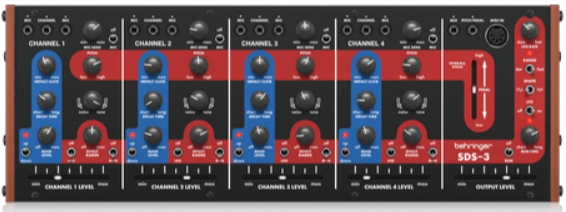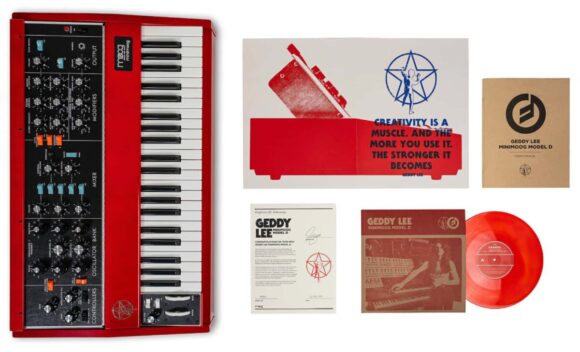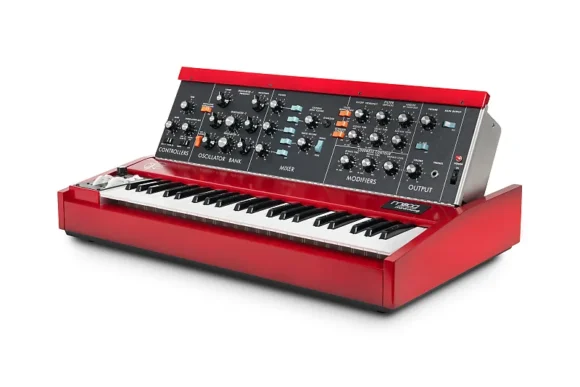Behringer Unveils SDS-3, Simmons SDS-3 Drum Synth Knockoff
Today, Behringer has announced the release of SDS-3, a knockoff of the Simmons SDS-3 Drum Synthesizer from 1978 that the company promises is going to “blow your mind”.
Simmons developed the SDS-3 while working for the St. Albans-based company Musicaid, a four-voice analogue drum synth played via a custom set of four Premier pads that paved the way for his later innovations.
The Behringer SDS-3 can be used as a standard analog drum module, but also features Mic inputs that let you trigger the drum channels using drum mics. The module also supports basic MIDI control for sequencing.
Like its predecessor, the Behringer SDS-3 offers four identical mono voices of analogue drum synthesis alongside a fifth channel reserved for modulation. Each voice is equipped with a self-oscillating diode ladder filter and a noise generator that can be blended together, between them covering all the familiar percussive territory – kicks, snares, toms, cymbals and hi-hats – along with hybrid sounds and experimental tones.
Each voice is equipped with controls for adjusting pitch – a dual-purpose control that adjusts the pitch for the tone generator and acts as a low-pass filter for the noise generator – and introducing impact click, along with pitch bend and decay. These are joined by level sliders along the bottom and a microphone sensitivity control up top. Finally, on each channel you have both on/off switches and an amount knob for SDS-3’s LFO and Run Time effect.
Assigned to the pitch of each voice, the LFO offers both square and sine waves and can also do audio-rate modulation. When engaged, the Run Time effect also introduces pitch modulation, but this continues over time rather than retriggering with each hit – you get a rate control for this also.
Each voice can be triggered via audio on 3.5mm TS jacks, so you’re able to use real drums to play the SDS-3, just like the original. You can also sequence the synth via its 5-pin MIDI In port and USB-B connection, if you’re no Buddy Rich behind the kit. Each voice has a trigger output and its own audio output, and a 3.5mm master output on the mixer panel too is complemented by a 1/4″ output on the rear.

Features:
- “Authentic reproduction” of Simmons SDS-3 circuitry from the ’70s
- Percussion sound capabilities including Toms, Bass Drums, Cymbals, Bells, Gongs, Vibes, Thunder, Jumbo Jets, etc.
- Special effects channel for sound modulation effects
- 4 drum channels with separate controls for clock, decay, bend, pitch, noise and assignable decay kill
- Sounds can be triggered via analog control input, MIDI and USB
- 4 independent analog outputs for external processing and recording
- 57 controls give you direct and real-time access to important parameters
- Compatible with standard Eurorack cases
- MIDI implementation with MIDI channel, Velocity and Voice Priority selection
The Behringer SDS-3 analog drum synthesizer is available to pre-order now and priced at $249 outside the US.
Find out more on Behringer website.




